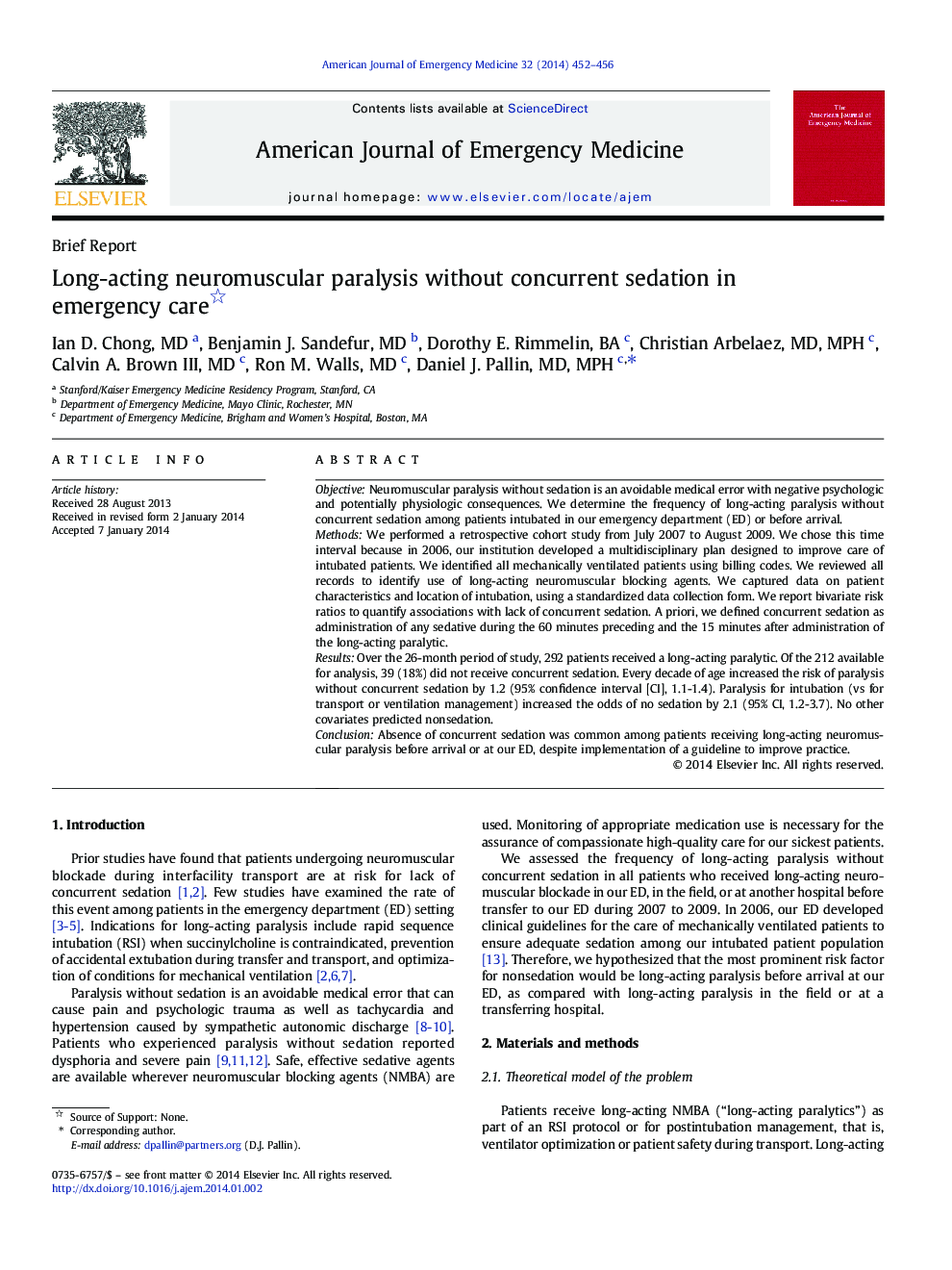| Article ID | Journal | Published Year | Pages | File Type |
|---|---|---|---|---|
| 3224551 | The American Journal of Emergency Medicine | 2014 | 5 Pages |
ObjectiveNeuromuscular paralysis without sedation is an avoidable medical error with negative psychologic and potentially physiologic consequences. We determine the frequency of long-acting paralysis without concurrent sedation among patients intubated in our emergency department (ED) or before arrival.MethodsWe performed a retrospective cohort study from July 2007 to August 2009. We chose this time interval because in 2006, our institution developed a multidisciplinary plan designed to improve care of intubated patients. We identified all mechanically ventilated patients using billing codes. We reviewed all records to identify use of long-acting neuromuscular blocking agents. We captured data on patient characteristics and location of intubation, using a standardized data collection form. We report bivariate risk ratios to quantify associations with lack of concurrent sedation. A priori, we defined concurrent sedation as administration of any sedative during the 60 minutes preceding and the 15 minutes after administration of the long-acting paralytic.ResultsOver the 26-month period of study, 292 patients received a long-acting paralytic. Of the 212 available for analysis, 39 (18%) did not receive concurrent sedation. Every decade of age increased the risk of paralysis without concurrent sedation by 1.2 (95% confidence interval [CI], 1.1-1.4). Paralysis for intubation (vs for transport or ventilation management) increased the odds of no sedation by 2.1 (95% CI, 1.2-3.7). No other covariates predicted nonsedation.ConclusionAbsence of concurrent sedation was common among patients receiving long-acting neuromuscular paralysis before arrival or at our ED, despite implementation of a guideline to improve practice.
